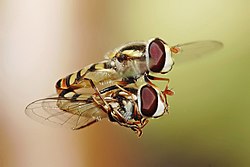Asexual

Asexual reproduction is a process by which organisms create genetically similar or identical copies of themselves without the contribution of genetic material from another organism. Bacteria divide asexually via binary fission; viruses take control of host cells to produce more viruses; Hydras (invertebrates of the order Hydroidea) and yeasts are able to reproduce by budding. These organisms often do not possess different sexes, and they are capable of "splitting" themselves into two or more copies of themselves. Most plants have the ability to reproduce asexually and the ant species Mycocepurus smithii is thought to reproduce entirely by asexual means.
Some species that are capable of reproducing asexually, like hydra, yeast (See Mating of yeasts) and jellyfish, may also reproduce sexually. For instance, most plants are capable of vegetative reproduction—reproduction without seeds or spores—but can also reproduce sexually. Likewise, bacteria may exchange genetic information by conjugation.
Other ways of asexual reproduction include parthenogenesis, fragmentation and spore formation that involves only mitosis. Parthenogenesis is the growth and development of embryo or seed without fertilization by a male. Parthenogenesis occurs naturally in some species, including lower plants (where it is called apomixis), invertebrates (e.g. water fleas, aphids, some bees and parasitic wasps), and vertebrates (e.g. some reptiles, fish, and, very rarely, birds and sharks). It is sometimes also used to describe reproduction modes in hermaphroditic species which can self-fertilize.
Comments
Post a Comment